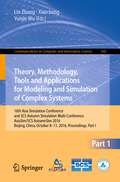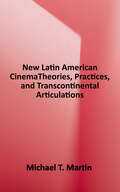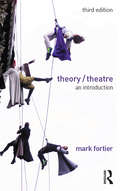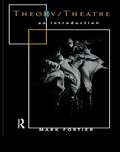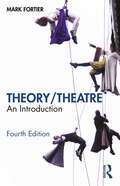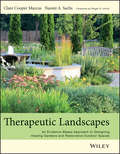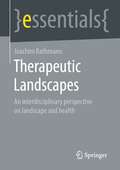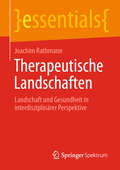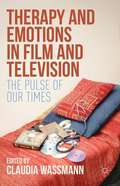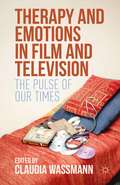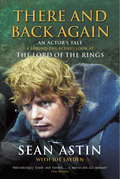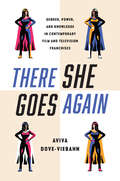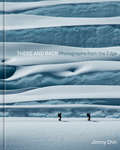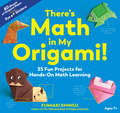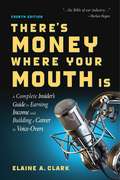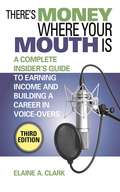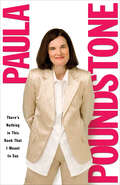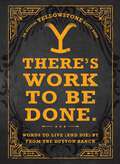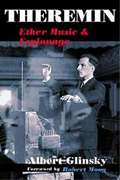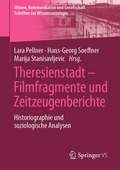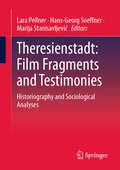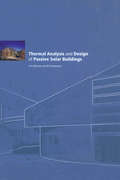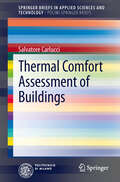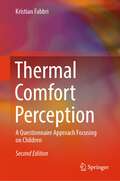- Table View
- List View
Theory, Methodology, Tools and Applications for Modeling and Simulation of Complex Systems: 16th Asia Simulation Conference and SCS Autumn Simulation Multi-Conference, AsiaSim/SCS AutumnSim 2016, Beijing, China, October 8-11, 2016, Proceedings, Part I (Communications in Computer and Information Science #643)
by Lin Zhang Xiao Song Yunjie WuThis four-volume set (CCIS 643, 644, 645, 646) constitutes the refereed proceedings of the 16th Asia Simulation Conference and the First Autumn Simulation Multi-Conference, AsiaSim / SCS AutumnSim 2016, held in Beijing, China, in October 2016. The 265 revised full papers presented were carefully reviewed and selected from 651 submissions. The papers in this first volume of the set are organized in topical sections on modeling and simulation theory and methodology; model engineering for system of systems; high performance computing and simulation; modeling and simulation for smart city.
Theory, Practices, and Transcontinental Articulations (New Latin American Cinema #1)
by Michael T. MartinMapping the historical and cultural contexts of film practices in Latin America, this two-volume collection of programmatic statements, essays and interviews is devoted to the study of a theorized, dynamic and unfinished cinematic movement. Forged by Latin America's post-colonial environment of underdevelopment and dependency, the New Latin American Cinema movement has sought to inscribe itself in Latin America's struggles for cultural and economic autonomy. <p><p> This volume explores the formation of the New Latin American Cinema movement, its national and continental implications (including the diasporic/exilic experience) and transcontinental articulations through the writings of pioneer film-makers and scholars. Glauber Rocha, Julio Garcia Espinosa, Jorge Sanjines, Fernando Solanas and Octavio Getino address the central question of the Latin American aesthetic—a particular style and production method connected with the political and social conditions and circumstances of Latin America. Ana Lopez, Julianne Burton and Michael Chanan examine the movement's formation in the 1950s and its development through the 1980s in a socio-historical context, paying special attention to modes of production and consumption. Paul Willemen assesses the movement's relevance to radical film practice and theory in the First and Third Worlds, and Antonio Skarmeta calls for a distribution network of Third World Cinema on a pan-European level. The volume concludes with essays by Ruby Rich and Zuzana M. Pick who address, from widely different approaches, the issues of the movement's adaptability, renovation and identity, in consideration of its evolution since the 1950s.
Theory/Theatre: An Introduction
by Mark FortierTheory/Theatre: An Introduction provides a unique and engaging introduction to literary theory as it relates to theatre and performance. Mark Fortier lucidly examines current theoretical approaches, from semiotics, poststructuralism, to cultural materialism, postcolonial studies and feminist theory. Drawing upon examples from Shakespeare and Aphra Behn, to Chekhov, Artaud, Cixous and Churchill, the author examines the specific realities of theatre in order to come to a richer understanding of the relations between performance and cultural theory. Theory/Theatre: An Introduction is the only study of its kind and will be invaluable reading for new students and scholars of performance studies.
Theory/Theatre: An Introduction
by Mark FortierTheory/Theatre: An Introduction provides a unique and engaging introduction to literary theory as it relates to theatre and performance. Mark Fortier lucidly examines current theoretical approaches, from semiotics, poststructuralism, to cultural materialism, postcolonial studies and feminist theory. Drawing upon examples from Shakespeare and Aphra Behn, to Chekhov, Artaud, Cixous and Churchill, the author examines the specific realities of theatre in order to come to a richer understanding of the relations between performance and cultural theory. Theory/Theatre: An Introduction is the only study of its kind and will be invaluable reading for new students and scholars of performance studies.
Theory/Theatre: An Introduction
by Mark FortierThis fully updated and revised fourth edition of Theory/Theatre is a unique and highly engaging introduction to cultural theory as it relates to theatre and performance. It is a comprehensive and accessible examination of current theoretical approaches, from semiotics and poststructuralism, through to cultural materialism, postcolonial studies, queer and feminist theories.Key updates to the new edition include further perspectives and expanded content on:- Technology, audience reception and liveness- Further examinations of feminism, transgender and gender theory, as well as queer theory- Disability studies- Critical Race Theory- Decolonization- Intersectionality- Critical PhenomenologyBringing contemporary voices and examples to light, author Mark Fortier introduces the ways in which established and emerging theories can interact with theatre and performance.This is essential reading for undergraduate and postgraduate students of theatre and performance studies.
Therapeutic Landscape Research Evidence in Eco-neighbourhood Design
by Monika TrojanowskaThis book presents how to recreate therapeutic landscapes in everyday places of eco-neighbourhoods. The concept of eco-neighbourhoods goes beyond the traditional form of a residential district. Eco-neighbourhoods are characterized by many aspects related to sustainability, including protection of the environment, building social capital, ensuring a high quality of life with low economic costs, and promoting social and environmental justice. The presented work aims to systematize these phenomena and interpret them.The action to take care of our common home, the Earth, starts locally. Creating townscapes that can promote everyday health could improve the standards of living on our planet. In both hemispheres, the majority of people live in cities; therefore, examples of good practices described in this book come from all inhabited continents. Education is the most empowering tool, which can change the future for many. Implementing eco-neighbourhoods may bring well-deserved change and hope to people in less-favoured locations of the globe.This book will be of interest to practitioners and students of architecture, civil and environmental engineering, landscape design, spatial management, urban planning, and related fields.
Therapeutic Landscapes
by Clare Cooper Marcus Naomi A SachsThis comprehensive and authoritative guide offers an evidence-based overview of healing gardens and therapeutic landscapes from planning to post-occupancy evaluation. It provides general guidelines for designers and other stakeholders in a variety of projects, as well as patient-specific guidelines covering twelve categories ranging from burn patients, psychiatric patients, to hospice and Alzheimer's patients, among others. Sections on participatory design and funding offer valuable guidance to the entire team, not just designers, while a planting and maintenance chapter gives critical information to ensure that safety, longevity, and budgetary concerns are addressed.
Therapeutic Landscapes: An Interdisciplinary Perspective on Landscape and Health (essentials)
by Joachim RathmannJoachim Rathmann presents the interdisciplinary relationships between landscapes and health. Nature is to be regarded as an elementary health resource, because movement in near-natural surroundings has demonstrably positive influences on human health and is summarized in many ways in the concept of "therapeutic landscapes". Natural areas offer an important resource for strengthening health, especially to an aging society, which can also be measured economically. The author presents natural science, social science, and humanities research in a clear, understandable, and concise manner for a broad readership. At the same time he gives suggestions for a conscious handling of the sensitive resource landscape and for a regular observation of nature. This springer essential is a translation of the original German 1st edition essentials,Therapeutic landscapes by Joachim Rathmann, published by Springer Fachmedien Wiesbaden GmbH, part of Springer Nature in 2020.The translation was done with the help of artificial intelligence (machine translation by the service DeepL.com). A subsequent human revision was done primarily in terms of content, so that the book will read stylistically differently from a conventional translation. Springer Nature works continuously to further the development of tools for the production of books and on the related technologies to support the authors.
Therapeutische Landschaften: Landschaft und Gesundheit in interdisziplinärer Perspektive (essentials)
by Joachim RathmannJoachim Rathmann stellt die interdisziplinären Bezüge von Landschaften und Gesundheit dar. Die Natur ist als elementare Gesundheitsressource zu betrachten, denn Bewegung in naturnaher Umgebung hat nachweislich positive Einflüsse auf die menschliche Gesundheit und wird im Konzept der „Therapeutischen Landschaften“ vielfältig zusammengefasst. Naturräume bieten vor allem einer älter werdenden Gesellschaft eine wichtige, auch ökonomisch messbare Ressource für die Stärkung von Gesundheit. Der Autor bereitet natur-, sozial,- und geisteswissenschaftliche Untersuchungen für eine breit gefächerte Leserschaft verständlich, anschaulich und übersichtlich auf. Gleichzeitig gibt er Anregungen für einen bewussten Umgang mit der sensiblen Ressource Landschaft und zu einer regelmäßigen Naturbeobachtung.
Therapy and Emotions in Film and Television: The Pulse Of Our Times
by Claudia WassmannTherapy and Emotions in Film and Television.
Therapy and Emotions in Film and Television: The Pulse of Our Times
by Claudia WassmannTherapy and Emotions in Film and Television explores, from an interdisciplinary perspective, the shifts in our emotional preferences, styles, and 'emotional regimes' in western societies from the 1920s to today, as viewed through the lens of film and television.
There And Back Again: An Actor's Tale
by Joe Layden Sean AstinWhen Sean Astin, veteran Hollywood actor of over 30 movies including The Goonies, and Rudy, landed the part of Samwise Gamgee in The Lord of the Rings, he knew it was going to be different to anything he'd ever worked on before. Here he shares his heartfelt opinions on his early movies, how he got the part of Sam at that point in his career, and what it was like to be on set for nearly two years of his life. How did he and the other cast members get along? What were the excitements and the dangers they faced during filming? What happened the evening that Elijah Wood lost the keys to his room? How did Sir Ian McKellen cope when he didn't like the music the hobbits listened to during make-up and what happened when the crew considered striking?Revealing and immensely readable, There and Back Again is the behind-the-scenes look at what it was like to be involved in the making of one of the biggest movie franchises of all time.
There She Goes Again: Gender, Power, and Knowledge in Contemporary Film and Television Franchises
by Aviva Dove-ViebahnThere She Goes Again interrogates the representation of ostensibly powerful women in transmedia franchises, examining how presumed feminine traits—love, empathy, altruism, diplomacy—are alternately lauded and repudiated as possibilities for effecting long-lasting social change. By questioning how these franchises reimagine their protagonists over time, the book reflects on the role that gendered exceptionalism plays in social and political action, as well as what forms of knowledge and power are presumed distinctly feminine. The franchises explored in this book illustrate the ambivalent (post)feminist representation of women protagonists as uniquely gifted in ways both gendered and seemingly ungendered, and yet inherently bound to expressions of their femininity. At heart,There She Goes Again asks under what terms and in what contexts women protagonists are imagined, envisioned, embodied, and replicated in media. Especially now, in a period of gradually increasing representation, women protagonists demonstrate the importance of considering how we should define—and whether we need—feminine forms of knowledge and power.
There and Back: Photographs from the Edge
by Jimmy ChinThe Academy Award–winning director of Free Solo and National Geographic photographer presents the first collection of his iconic adventure photography, featuring some of the greatest moments of the most accomplished climbers and outdoor athletes in the world, and including more than 200 extraordinary photographs. <p><p> Jimmy Chin goes where few can follow to capture stunning images in death-defying situations. There and Back draws from his breathtaking portfolio of photographs, captured over twenty years during cutting-edge expeditions on all seven continents—from skiing Mount Everest, to an unsupported traverse of Tibet's Chang Tang Plateau on foot, to first ascents in Chad’s Ennedi Desert and Antarctica’s Queen Maud Land. <p><p> Along the way, Chin shares behind-the-scenes details about how he captured such astounding images in impossible conditions, and tells the stories of the legendary adventurers and remarkable athletes he has photographed, including Alex Honnold, the star of his Academy Award–winning documentary film Free Solo; ski mountaineer Kit DesLauriers; snowboarder Travis Rice; and mountaineers Conrad Anker and Yvon Chouinard. These larger-than-life images, coupled with stories of outsized drive and passion, of impossible goals with life or death stakes, of partnerships forged through incredible hardship, are sure to inspire wonder and awe.
There's Math in My Origami!: 35 Fun Projects For Hands-on Math Learning
by Fumiaki Shingu35 creative origami designs plus brain-teasing math questions add up to the perfect math activity for kids Discover how fractions, shapes, and symmetry turn a flat sheet of paper into a 3D work of art! Each one of the 35 amazing projects in There’s Math in My Origami!invites kids to: Follow the simple, step-by-step instructions Flex their math skills by answering a fun quiz question Fold adorable origami like they’ve never seen before! Includes educational projects for kids ages 7 and up—plus 2 pages of eye stickers, and 80 sheets of origami paper!
There's Money Where Your Mouth Is (Fourth Edition): A Complete Insider's Guide to Earning Income and Building a Career in Voice-Overs
by Elaine A. Clark“The bible of our industry” —Harlan HoganHow to sell your voice and make a living from it. Voices are increasingly in demand for commercials, video games, audio books, cartoon characters, announcements, and other spots. This outstanding handbook explains how to launch a career and work in the field of professional voice-overs. Along with sample commercials and script copy, the author gives advice on vocal exercises, self-promotion, and business matters. Chapters cover everything from breaking into the industry, getting an agent, and marketing your talent to exercises in voice aerobics, melody and tempo, and delivering believable narration. Copy basics, layering techniques, and commercial and stylized characters are also discussed. This expanded edition features:New tips on making a demo Vocal modulation and breath techniques Advanced copy-reading strategies In addition to all of this useful information, there is a section on how copywriters see the job of the voice artists for whom they write, giving voice-over actors an inside scoop. If you've ever been interested in voice-over acting, you need this book!
There's Money Where Your Mouth Is: A Complete Insider's Guide to Earning Income and Building a Career in Voice-Overs
by Elaine A. ClarkVoices are increasingly in demand for commercials, cartoon characters, announcements, and other spots. This outstanding handbook explains how to launch a career and ?nd work. Along with sample commercials and script copy, the author gives advice on vocal exercises, self-promotion, and business matters. Chapters include: getting started, voice-over aerobics, copy basics, melody and tempo, layering techniques, believing what you say, commercial and stylized characters, corporate narration, animation, video games and toys, getting an agent, marketing your talent, and staying on top of the business. This expanded edition features new tips on making a demo CD, vocal modulation and breath techniques, advanced copy-reading strategies, and a section on how copywriters see the job of the voice artists for whom they write. If you've ever been interested in voice-over acting, you need this book!
There's Nothing in This Book That I Meant to Say
by Paula PoundstonePart memoir, part monologue, with a dash of startling honesty, There’s Nothing in This Book That I Meant to Say features biographies of legendary historical figures from which Paula Poundstone can’t help digressing to tell her own story. Mining gold from the lives of Abraham Lincoln, Helen Keller, Joan of Arc, and Beethoven, among others, the eccentric and utterly inimitable mind of Paula Poundstone dissects, observes, and comments on the successes and failures of her own life with surprising candor and spot-on comedic timing in this unique laugh-out-loud book.If you like Paula Poundstone’s ironic and blindingly intelligent humor, you’ll love this wryly observant, funny, and touching book.Paula Poundstone on . . .The sources of her self-esteem: “A couple of years ago I was reunited with a guy I knew in the fifth grade. He said, “All the other fifth-grade guys liked the pretty girls, but I liked you.” It’s hard to know if a guy is sincere when he lays it on that thick.The battle between fatigue and informed citizenship: I play a videotape of The NewsHour with Jim Lehrer every night, but sometimes I only get as far as the theme song (da da-da-da da-ah) before I fall asleep. Sometimes as soon as Margaret Warner says whether or not Jim Lehrer is on vacation I drift right off. Somehow just knowing he’s well comforts me.The occult: I need to know exactly what day I’m gonna die so that I don’t bother putting away leftovers the night before.TV’s misplaced priorities: Someday in the midst of the State of the Union address they’ll break in with, “We interrupt this program to bring you a little clip from Bewitched.”Travel: In London I went to the queen’s house. I went as a tourist—she didn’t invite me so she could pick my brain: “What do you think of my face on the pound? Too serious?”Air-conditioning in Florida: If it were as cold outside in the winter as they make it inside in the summer, they’d put the heat on. It makes no sense.The scandal: The judge said I was the best probationer he ever had. Talk about proud.With a foreword by Mary Tyler Moore
There's Work to Be Done.: Words to Live (and Die) By from the Dutton Ranch
by Adams MediaFor the millions of Yellowstone fans, the official quote book There&’s Work to Be Done. captures the advice they live by, the exchanges they remember, and the lines they love to recite.&“There&’s work to be done.&” —Rip Wheeler, Season 1, Episode 6, &“The Remembering&” The characters of Yellowstone don&’t mince words. And that&’s just the way fans like it. From John Dutton&’s sage advice to Beth&’s pointed barbs, the show&’s iconic lines and exchanges live on long after each episode ends. There&’s Work to Be Done. captures those famous—and infamous—quotes in a collection that&’ll brand any Yellowstone fan as a true diehard. With more than 75 quotes and stills from Seasons 1 through 5, they&’ll be able to relive and recite lines such as: -&“You are the trailer park. I am the tornado.&” —Beth Dutton, Season 3, Episode 5, &“Cowboys and Dreamers&” -&“You find out real fast who&’s willing to ride for the brand when they learn they gotta wear it.&” —John Dutton, Season 5, Episode 8, &“A Knife and No Coin&” -&“My tomorrows are all yours.&” —Rip Wheeler, Season 3, Episode 4, &“Going Back to Cali&” -&“Gonna go do some cowboy sh*t now.&” —Walker, Season 5, Episode 7, &“The Dream Is Not Me&” Time to get the work done and ride for the brand with this official Yellowstone quote book.
Theremin: Ether Music and Espionage
by Albert Glinsky Robert MoogLeon Theremin led a life of flamboyant musical invention laced with daring electronic stealth. A creative genius and prolific inventor, Theremin launched the field of electronic music virtually singlehandedly in 1920 with the musical instrument that bears his name. The theremin--the only instrument that is played without being touched--created a sensation worldwide and paved the way for the modern synthesizer. Its otherworldly sound became familiar in sci-fi films and even in rock music. This magical instrument that charmed millions, however, is only the beginning of the story. As a Soviet scientist, Theremin surrendered his life and work to the service of State espionage. On assignment in Depression-era America, he became the toast of New York society and worked the engines of capitalist commerce while passing data on U. S. industrial technology to the Soviet apparatus. Following his sudden disappearance from New York in 1938, Theremin was exiled to a Siberian labor camp and subsequently vanished into the top-secret Soviet intelligence machine, presumed dead for nearly thirty years. Throughout his life, Theremin developed many other electronic wonders, including one of the earliest televisions and multimedia devices that anticipated performance art and virtual reality by decades. In this first full biography of Leon Theremin, Albert Glinsky depicts the inventor's nearly one hundred-year life span as a microcosm of the twentieth century. Theremin is seen at the epicenter of most of the major events of the century: the Russian Revolution, two world wars, America's Great Depression, Stalin's purges, the cold war, and perestroika. His life emerges as no less than a metaphor for the divergence of communism and capitalism. Theremin blends the whimsical and the treacherous into a chronicle that takes in everything from the KGB to Macy's store windows, Alcatraz to the Beach Boys, Hollywood thrillers to the United Nations, Joseph Stalin to Shirley Temple. loyalties, mixed motivations, and an irrepressibly creative spirit.
Theresienstadt – Filmfragmente und Zeitzeugenberichte: Historiographie und soziologische Analysen (Wissen, Kommunikation und Gesellschaft)
by Marija Stanisavljevic Hans-Georg Soeffner Lara PellnerIm Ghetto, Durchgangs- und Konzentrationslager Theresienstadt sind, unter erzwungener Beteiligung der Deportierten, filmische Aufzeichnungen entstanden und unter dem Titel „Theresienstadt – Ein Dokumentarfilm aus dem jüdischen Siedlungsgebiet“ bekannt geworden. Als besonders perfider Teil nationalsozialistischer Propaganda wirken diese Aufnahmen bis in die Gegenwart nach: Leugner des nationalsozialistischen Genozids verweisen bis heute auf diesen Film. Im Rahmen des Sammelbandes wird die Sonderstellung Theresienstadts auf unterschiedlichen Ebenen beleuchtet. Neben der Analyse von Zeitzeugeninterviews finden sich soziologische, philosophische und geschichtswissenschaftliche Betrachtungen der Umstände, Zustände und Besonderheiten Theresienstadts.
Theresienstadt: Historiography and Sociological Analyses
by Hans-Georg Soeffner Lara Pellner Marija StanisavljevićIn the ghetto, transit and concentration camp Theresienstadt, film recordings were made with the forced participation of the deportees and became known under the title "Theresienstadt - A Documentary from the Jewish Settlement Area". As a particularly perfidious part of National Socialist propaganda, these recordings continue to have an impact to the present day: Deniers of the National Socialist genocide still refer to this film today. In this anthology, the special position of Theresienstadt is examined on various levels. In addition to the analysis of eyewitness interviews, sociological, philosophical, and historiographical reflections on the circumstances, conditions, and peculiarities of Terezin are included.
Thermal Analysis and Design of Passive Solar Buildings (BEST (Buildings Energy and Solar Technology))
by AK AthienitisPassive solar design techniques are becoming increasingly important in building design. This design reference book takes the building engineer or physicist step-by-step through the thermal analysis and design of passive solar buildings. In particular it emphasises two important topics: the maximum utilization of available solar energy and thermal storage, and the sizing of an appropriate auxiliary heating/cooling system in conjunction with good thermal control. Thermal Analysis and Design of Passive Solar Buildings is an important contribution towards the optimization of buildings as systems that act as natural filters between the indoor and outdoor environments, while maximizing the utilization of solar energy. As such it will be an essential source of information to engineers, architects, HVAC engineers and building physicists.
Thermal Comfort Assessment of Buildings
by Salvatore CarlucciA number of metrics for assessing human thermal response to climatic conditions have been proposed in scientific literature over the last decades. They aim at describing human thermal perception of the thermal environment to which an individual or a group of people is exposed. More recently, a new type of "discomfort index" has been proposed for describing, in a synthetic way, long-term phenomena. Starting from a systematic review of a number of long-term global discomfort indices, they are then contrasted and compared on a reference case study in order to identify their similarities and differences and strengths and weaknesses. Based on this analysis, a new short-term local discomfort index is proposed for the American Adaptive comfort model. Finally, a new and reliable long-term general discomfort index is presented. It is delivered in three versions and each of them is suitable to be respectively coupled with the Fanger, the European Adaptive and the American Adaptive comfort models.
Thermal Comfort Perception: A Questionnaire Approach Focusing on Children (Springerbriefs In Applied Sciences And Technology Ser.)
by Kristian FabbriThis book offers a comprehensive exploration of children's understanding and experiences of thermal comfort. The book provides a methodology for evaluating comfort that takes into account the unique perspectives of children. The first part of the book provides an overview of the history of thermal comfort, the human body and environmental parameters, and common thermal comfort indexes. It also offers guidelines for creating questionnaires that accurately assess children's perceptions of indoor thermal comfort. The book then delves into children's understanding of the concepts of comfort and energy, as well as the factors that influence their perception of these concepts. It addresses the psychological and pedagogical aspects of thermal comfort judgment, as well as the architectural and environmental characteristics that contribute to children's perceptions of comfort. First published as Indoor Thermal Comfort Perception, this updated edition also includes new sections on architecture and sensitivity, exploring the impact of classroom spaces on learning, and outdoor education and thermal comfort outdoors, based on qualitative research. These additions provide valuable insights for future studies on these topics. While physical parameter measurements and comfort indexes are useful in thermal comfort, the book emphasizes the importance of ergonomic assessments in the form of questionnaires, which offer unique insights into children's experiences. The book fills a critical gap in understanding children's perceptions of thermal comfort and is essential reading for HVAC engineers, architects, environmental psychologists, and researchers in the medical and cognitive fields.
